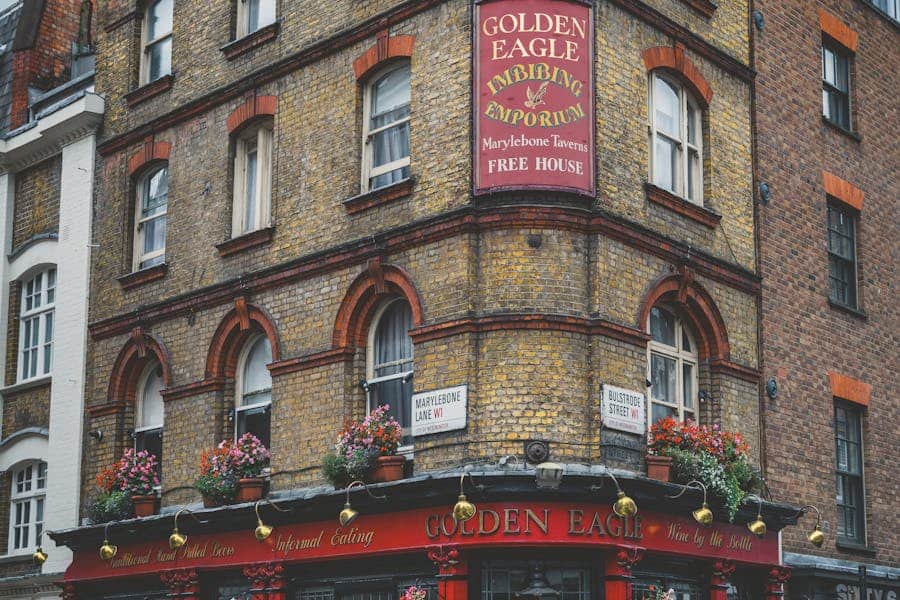The tradition of wearing wigs in British courts is a distinctive feature of the legal system, rooted in centuries of history. Originally introduced in the 17th century as a symbol of status and authority, wigs have become a hallmark of British courtroom attire. Despite evolving fashion and changing societal norms, wigs remain a prominent element in the legal profession. Today, while the style and use of wigs have adapted to modern standards—becoming more functional and less ornate—they continue to serve as a symbol of impartiality and tradition. This practice underscores the British legal system’s commitment to maintaining historical continuity. The debate over whether wigs are an outdated relic or a cherished tradition continues, reflecting broader discussions about preserving heritage while adapting to contemporary values.
Do They Still Wear Wigs In British Courts?
Yes, wigs are still worn in British courts. This tradition dates back to the 17th century and serves as a symbol of authority and impartiality. While the style has evolved to be more practical and less elaborate, wigs continue to be a distinctive feature in many courtrooms, reflecting the legal system’s commitment to historical continuity.
What Is The Historical Significance Of Wigs In British Courts?
The tradition of wearing wigs in British courts is deeply rooted in history, symbolizing authority, continuity, and formality within the legal system. This distinctive practice, which may seem anachronistic today, has significant historical significance that reflects broader social and legal changes over the centuries.
The origins of wigs in British courts trace back to the 17th century, during a period when elaborate wigs were a popular fashion among the elite. Initially, wigs were a sign of high social status and sophistication. The legal profession, keen to project an image of dignity and impartiality, adopted this trend. Wigs were introduced into the courtroom as part of the broader adoption of formal dress codes by the legal elite, aiming to create a uniform appearance that underscored the seriousness of legal proceedings.
Wigs served multiple purposes. Primarily, they helped to convey a sense of authority and impartiality. By standardizing the appearance of judges and barristers, wigs ensured that personal identity and social status did not influence judicial proceedings. This uniformity was intended to maintain the focus on the law rather than the individuals administering it, thereby reinforcing the principles of justice and equality before the law.
Over time, the significance of wigs evolved. They became a symbol of legal tradition and continuity, linking contemporary legal practices with their historical roots. The use of wigs in British courts reflects a respect for the past and a commitment to preserving the integrity of the legal system. This connection to history provides a sense of stability and consistency in the administration of justice, even as other aspects of the legal system have modernized.
Despite their historical importance, the style and use of wigs have undergone changes. Originally, wigs were large and elaborate, reflecting the fashion of the time. Today, the wigs worn by judges and barristers are simpler and more functional, made from synthetic materials rather than horsehair. This evolution represents a shift towards practicality while maintaining the core symbolic functions of the tradition.
In recent years, the role of wigs has been subject to debate. Critics argue that they are an outdated practice that does not align with modern values or dress codes. Conversely, proponents view them as an essential part of the legal tradition that provides continuity and a sense of formality in the courtroom.
Wigs in British courts hold significant historical value. They symbolize the authority, impartiality, and continuity of the legal system, linking contemporary practice with centuries of legal tradition. While their use may evolve, the tradition of wearing wigs remains a testament to the enduring nature of legal heritage.
Why Do British Courts Continue To Use Wigs Today?
The continued use of wigs in British courts, despite evolving fashion and modern sensibilities, is a reflection of deep-seated traditions and values within the legal system. While the practice may seem outdated to some, there are several key reasons why wigs remain a staple in many British courtrooms today.
Symbol of Authority and Impartiality: One of the primary reasons for the continued use of wigs is their role as a symbol of authority and impartiality. Wigs provide a uniform appearance for judges and barristers, which helps to emphasize that decisions are made based on law rather than personal characteristics or social status. This visual uniformity reinforces the notion that everyone in the courtroom is equal before the law, regardless of their background or identity. By creating a standardized appearance, wigs contribute to maintaining the dignity and seriousness of legal proceedings.
Tradition and Continuity: Wigs are deeply embedded in the history of the British legal system. Their use dates back to the 17th century, and continuing this practice serves to honor and preserve legal traditions. For many in the legal profession, maintaining such traditions provides a sense of continuity and connection to the past. This historical link underscores the stability and longevity of the legal system, reflecting a respect for the heritage and practices that have shaped modern legal institutions.
Formality and Respect: The formality associated with wigs adds to the gravitas of court proceedings. By adhering to traditional dress codes, the legal system underscores the seriousness of the process and the respect it commands. The presence of wigs in the courtroom serves as a constant reminder of the importance of the legal matters being addressed. This formality helps ensure that all parties involved approach the proceedings with the appropriate level of decorum and respect.
Evolution and Adaptation: Although the use of wigs continues, their style has evolved to meet modern practical needs. Today’s wigs are made from synthetic fibers, making them more durable and easier to maintain compared to their historical counterparts. Additionally, the application of wigs has become more selective, with their use being more common in certain types of courts and less so in others, such as family courts. This evolution reflects a balance between tradition and practicality.
the continued use of wigs in British courts is rooted in their symbolic significance, historical importance, and the formality they bring to legal proceedings. While their role may evolve, the tradition of wearing wigs remains a cornerstone of British legal practice, bridging the gap between the past and present and reinforcing the values of authority and impartiality within the justice system.
The Practical Aspects Of Wearing Wigs In Court
While wigs in British courts are steeped in tradition and symbolism, their practical aspects also play a significant role in their continued use. These practical considerations address both functionality and adaptation to modern needs, ensuring that wigs remain a viable part of courtroom attire.
Design and Materials
Modern court wigs are designed with practicality in mind. Historically, wigs were made from horsehair, which required considerable maintenance and was prone to wear and tear. Today, most wigs are crafted from synthetic fibers, which offer durability and ease of maintenance. Synthetic materials are more resistant to damage and easier to clean than natural hair, reducing the time and cost associated with their upkeep. The design of contemporary wigs is also streamlined to be lighter and more comfortable for extended wear, addressing the needs of modern legal professionals.
Adaptation to Modern Legal Practices
The use of wigs in British courts has evolved to suit contemporary legal practices. While wigs are still worn in formal settings such as criminal and appellate courts, their use has become less common in other areas, such as family or civil courts. This selective application reflects an adaptation to modern courtroom dynamics, where the formality of wigs may be deemed less essential. By reserving wigs for higher courts, the legal system balances tradition with practicality, ensuring that the attire remains relevant and functional.
Impact on Courtroom Environment
Wigs contribute to the formal atmosphere of the courtroom, which can positively affect proceedings. The uniform appearance created by wigs helps to establish a professional and respectful environment. This formality can influence the behavior of all participants, encouraging them to approach the process with the appropriate seriousness and decorum. In this way, wigs help to maintain the gravitas of legal proceedings, reinforcing the importance of the judicial process.
Comfort and Practicality for Wearers
Comfort is an important practical consideration for those who wear wigs. Modern wigs are designed to be lightweight and breathable, reducing the discomfort that might be associated with prolonged use. The materials used in contemporary wigs are chosen for their comfort and adaptability, ensuring that legal professionals can wear them without undue strain. Additionally, wigs are often fitted with adjustable elements to accommodate different head sizes and shapes, enhancing their practicality for a diverse range of wearers.
Maintenance and Longevity
Maintaining wigs is a practical concern that affects their longevity. Synthetic wigs require less frequent cleaning and conditioning compared to their natural hair predecessors. Regular maintenance involves simple cleaning routines that ensure the wigs remain in good condition and presentable. This ease of maintenance contributes to the practicality of continuing to use wigs in the courtroom.
the practical aspects of wearing wigs in court encompass design, adaptation, comfort, and maintenance. Modern wigs are designed to meet contemporary needs while preserving the symbolic and formal values associated with traditional courtroom attire. By addressing these practical considerations, wigs remain a functional and relevant element of the British legal system.
Summary
Wigs continue to be worn in British courts, reflecting a deep respect for tradition and a commitment to maintaining the dignity of the legal process. While their use has evolved, with modern wigs made from synthetic materials and applied selectively in different types of courts, they remain a powerful symbol of authority, impartiality, and continuity. Despite debates over their relevance, wigs help uphold the formality and professionalism of legal proceedings, bridging the gap between historical practices and contemporary legal standards. Their enduring presence underscores the British legal system’s dedication to preserving its rich heritage.
FAQ
Do American Judges Wear Wigs?
No, American judges do not wear wigs. Unlike British courts, which use wigs as part of traditional courtroom attire, American legal attire is more contemporary. Judges in the U.S. typically wear black robes, reflecting the formality and authority of the court without the historical association of wigs.
When Did British Judges Stop Wearing Wigs?
British judges have not entirely stopped wearing wigs. However, their use has been largely reduced since the late 20th century. Wigs are now primarily worn in higher courts such as criminal and appellate courts, while they are less common in family and civil cases. This shift began in the 1990s.
What to Wear to Court Female UK?
In the UK, women attending court should dress conservatively and professionally. Appropriate attire includes a smart suit or dress, often paired with a jacket. It’s important to avoid casual clothing, such as jeans or T-shirts, and opt for closed-toe shoes. Overall, the goal is to present oneself respectfully in a formal setting.











Leave a Reply